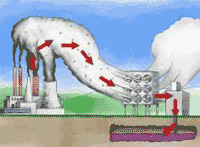| |
|
| |
|
 |
Supply
Chain by the Numbers |
| |
|
| |
- Feb. 10, 2022
|
| |
|
| |
|
| |
|
| |
Mixed Q4 Results at Amazon; TuSimple Lands First Commercial Customer for Autonomous Trucks; US Trade Deficit Soared in 2021; New Attempts for Carbon Capture Technology |
| |
|
| |
| |
| |
| |
-1% |
|
| That was the change in Amazon’s Q4 2021 on-line sales, as presented last week in the company’s quarterly earnings report. That’s a big change from the huge growth numbers Amazon regularly turned in until fairly recently. Has the well-known law of large number at last finally hit Amazon too? Profits in the quarter jumped a lot more than expected given rising costs, to $14.3 billion, up from $7.2 billion a year ago. That sent Amazon’s stock price up some 13% in one day. But was that bullishness justified? It turns that almost all the quarterly profit came from booking gain of nearly $12 billion from its investment in electric-vehicle maker Rivian Automotive. And there were more negative numbers in the quarter. For example, Amazon actually lost money in its core ecommerce business, saying it had $206 million in operating losses in the US and $1.63 billion in losses internationally. So Amazon is still not making money in ecommerce. |
|
|
| |
| |
|
|
|
| That was the full year total US trade deficit in 2021, up 27% from 2020 and a new al-time high – a sign both of economic strength but also weak manufacturing competitiveness. That according to a report this week from the US Census Bureau. That well exceeded the previous record trade gap of $763.5 billion in 2006. The politically sensitive trade deficit in goods with China also rose sharply, rising to $355.3 billion in 2021 versus $310.3 billion the prior year, though that was still below the all-time high of $418.2 billion in 2018, not long before the Trump administration tariffs. Those tariffs don’t seem to be slowing the deficit with China down even when kept in place by the new Biden team. |
| |
| |
|
|
| |
| |
$85 |
 |
That is how much companies would be paid by the US government for each metric ton of carbon captured as it rises up industrial smokestacks, if it is then stored in saline geologic formations, under a bill now making its way through Congress. That would be up 70% from current capture credit levels. That according to an interesting article this week in the Wall Street Journal. It turns out the process of capturing carbon in the air or as part of manufacturing or utility plant emissions really works. The problems: it is an expensive endeavor, and worse there are no real markets for the captured carbon. Nevertheless, a fresh round of U.S. carbon capture projects is in the works, bolstered by around $12.1 billion in funding in the infrastructure bill signed into law last year – because many view carbon capture at critical to meeting CO2 reduction targets. |
| |
| |
| |
| |
| |
|
|
|
| |
 |
 |
| |
 |
![]() |
 |
|
| |
 |
Feedback |
|
|
|
![]()
|
No Feedback on this article yet.
|
|
![]() |
|
|
|
![]() |
 |
![]() |
 |
|
| |